tradosaurus, if you believe the earth is flat, how do you explain this facts?
1)The sun/moon setting or rising. The law of perspective says the sun and the moon must be at an infinite distance from you to even
APPEAR to touch the horizon. This can also be described mathematically.
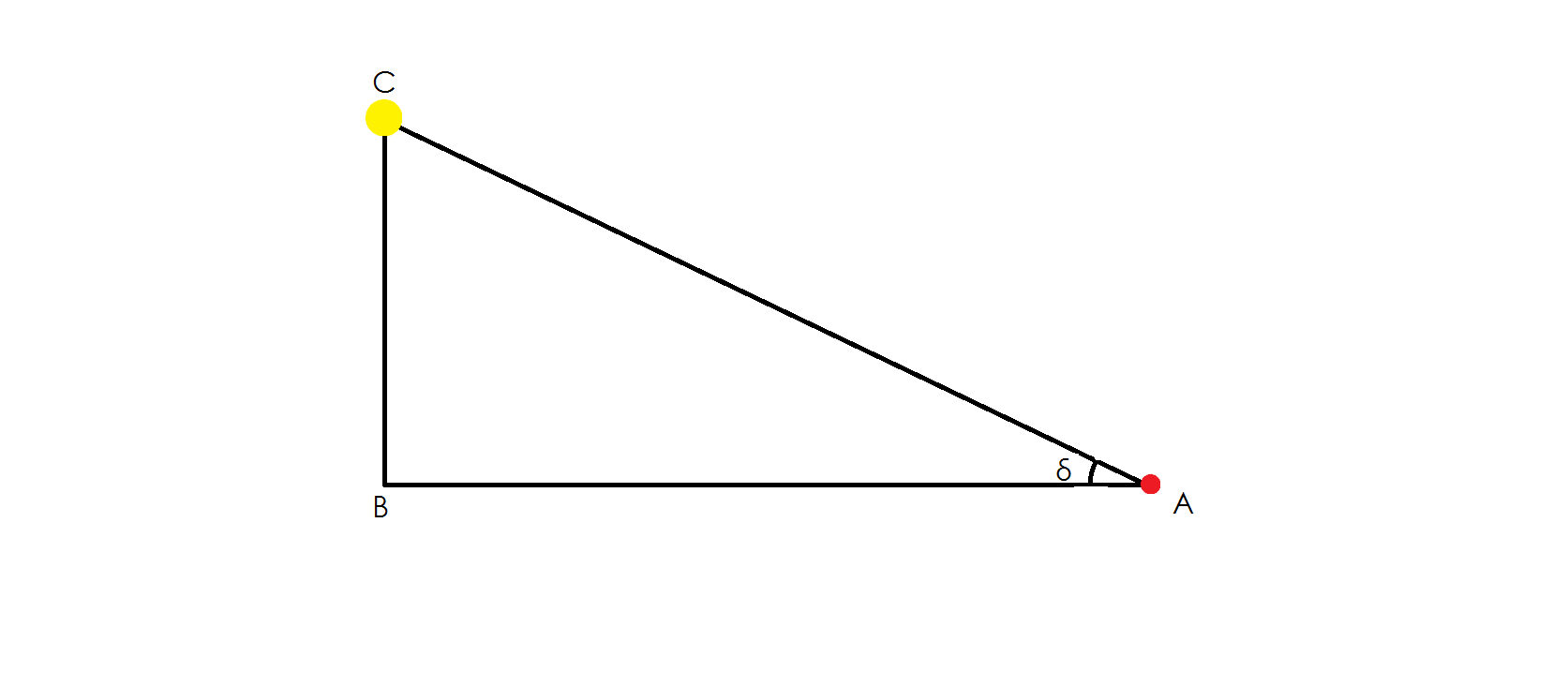
Be it the triangle ABC. Where:
A is the observer position.
B is the point where the sun lies overhead.
C is the sun or moon.
δ is the angle between the sun and the horizon or namely the amount your head must tilt up to see the sun.
The side AB is the distance from you to where the sun lies overhead. BC is the altitude of the sun or 3000 miles.
To find δ we must know the ratios between BC and AB or tan(δ)=BC/AB.
Which is δ=arctan(BC/AB)
What happens when BA tends to infinity? It equals 0

The setting or rising of the sun/moon implies the angle δ becomes negative which is impossible on a flat earth since it is always above the ground.
2)The moon and sun angular size. The law of perspective states an object must get smaller the farther away it is from you and vice versa. In reality, they stay almost the same size or roughly 31 arc minutes through the year when on a flat earth they should change daily. It can be described mathematically:
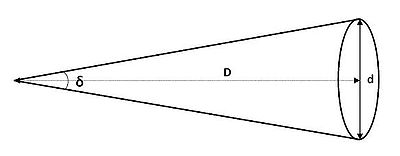
The equation is δ= 2arctan (d/ (2D)) where D is the distance of the object from you and d is the diameter of said object.
What happens to δ when D tends to infinity? It becomes 0 but it can never be 0 on a flat earth since objects remain above the surface.

Atmospheric magnification only works on magnifying the glare. Put a solar filter and the sun/moon remains at roughly 31 arc minutes through the day.
3)The apparent speed of the sun and the moon across the sky. The law of perspective states an object will appear to decelerate the farther away it moves from you and vice versa on a flat earth.
In reality, both sun and moon move at an evenly speed across the sky since the earth rotates at a constant speed as predicted on a spherical earth.
4)The sun and moon path across the sky. On a flat earth, the path of the sun would be in an arc. For example on the equinox, the movement would be a 180 degree arc above the sky on a flat earth, not a straight line like the spherical earth dictates and we see in reality.
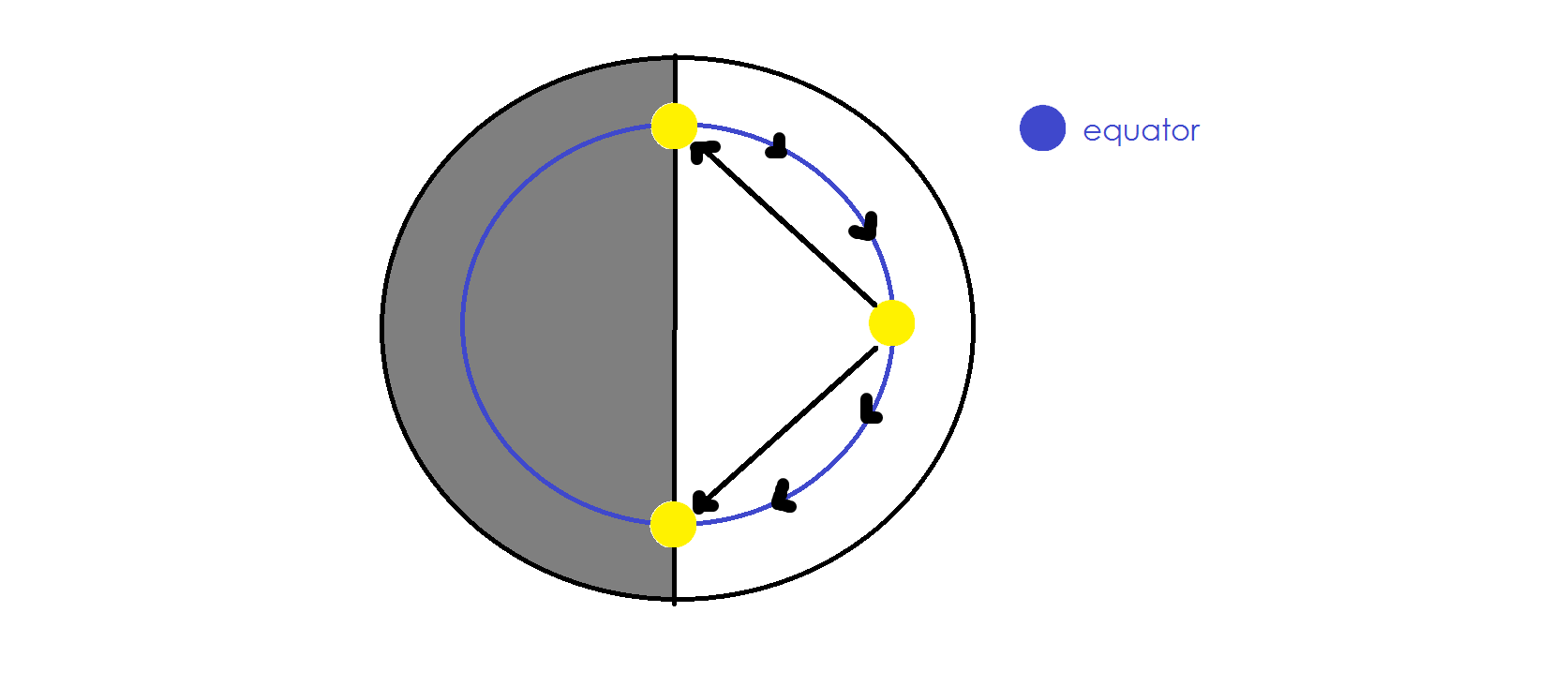
5)The position where the sun rises and sets on the sky. The flat earth dictates the sun will rise NE and set NW on both equinox and December solstice. When in reality, the sun rises E and sets W for everyone on the equinox or that it rises SE and sets SW for everyone even below the Capricorn line on the December solstice.
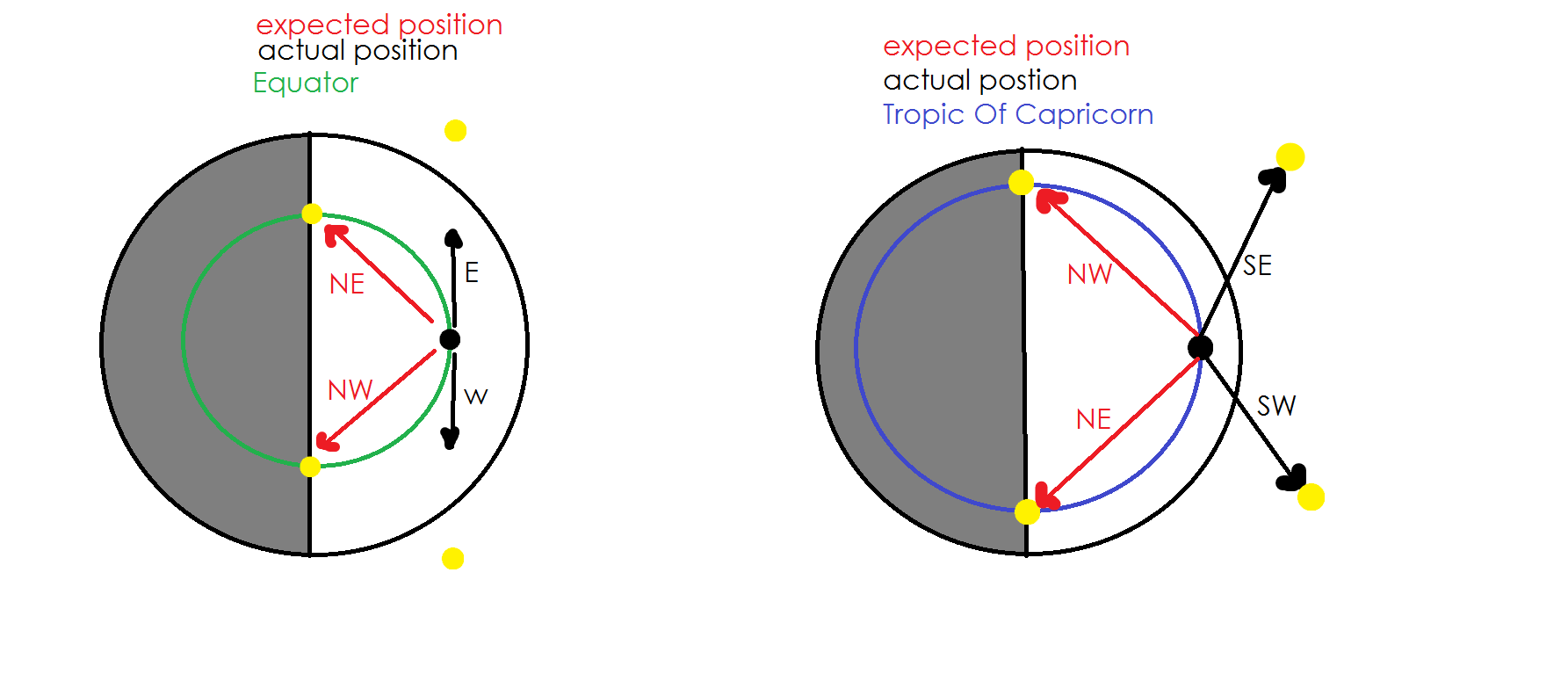
6)The longitude lines. On a flat earth they should increase below the equator and decrease above it. But in reality, they decrease in both directions. For example, the Capricorn line is the same length as the tropic of Cancer. It DOES not matter if some longitude lines increase below of the equator, you would still get a sphere but with some irregularities when on your flat earth ALL of longitude lines should increase below the equator.
7)Latitude lines. On a flat earth they will grow exponentially but instead, they are perfectly uniform as predicted on a sphere. Draw me a set of triangles whose share the same baseline and which apex angle differs by one degree in which the opposite side is uniform with every one degree. You can’t because It is impossible.
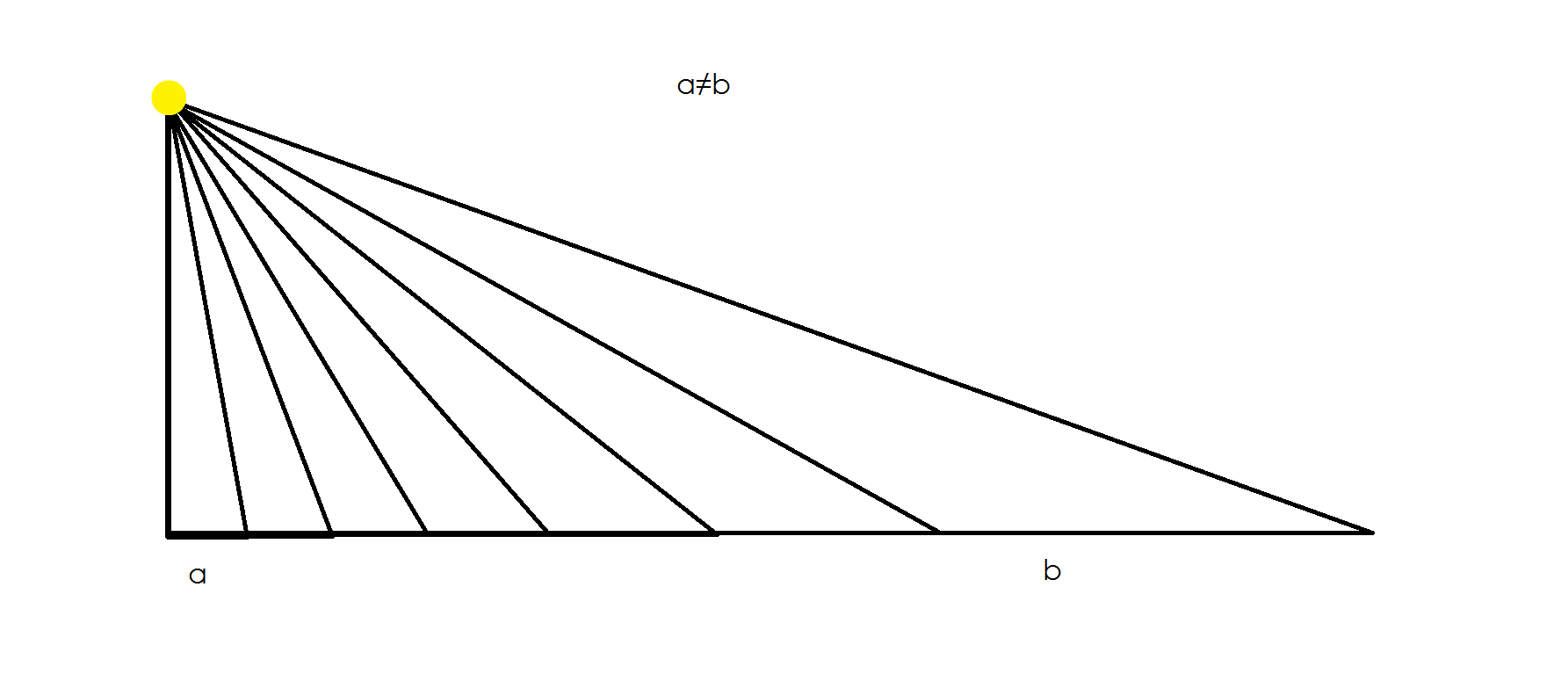
8)The celestial sphere. Flat earthers claim Polaris rotates above the north pole in a clockwise fashion.
This would imply several things:
a)If you stood on the North Pole, you would look Polaris rotate in a perfect circle above you. But the farther away you move from it, the more ovaloid this circle gets.
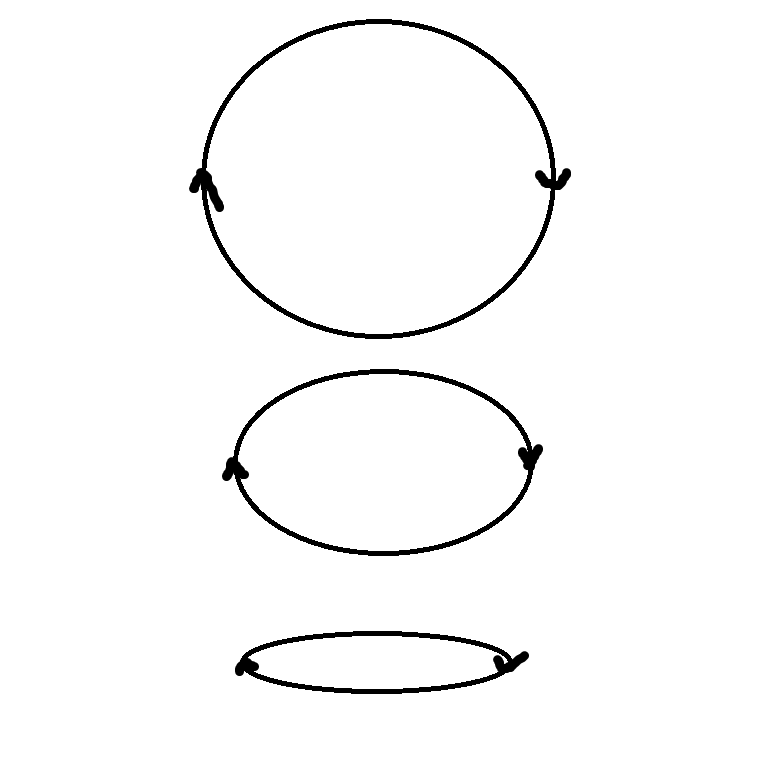
But instead it remains the same wherever you are be it the equator or the tropic of cancer.

b)The north circumpolar stars should be seen below ALL the equator, not some places since there is no curvature in a flat earth to hide the stars. But in fact, Polaris can only be seen a degree or so of latitude below the equator since the earth curves and it is not exactly in the axis of rotation.
c)If the stars are rotating around Polaris in a north pole, all stars in the sky would appear to transverse the horizon looking due south. But you see them rotating on a central point.
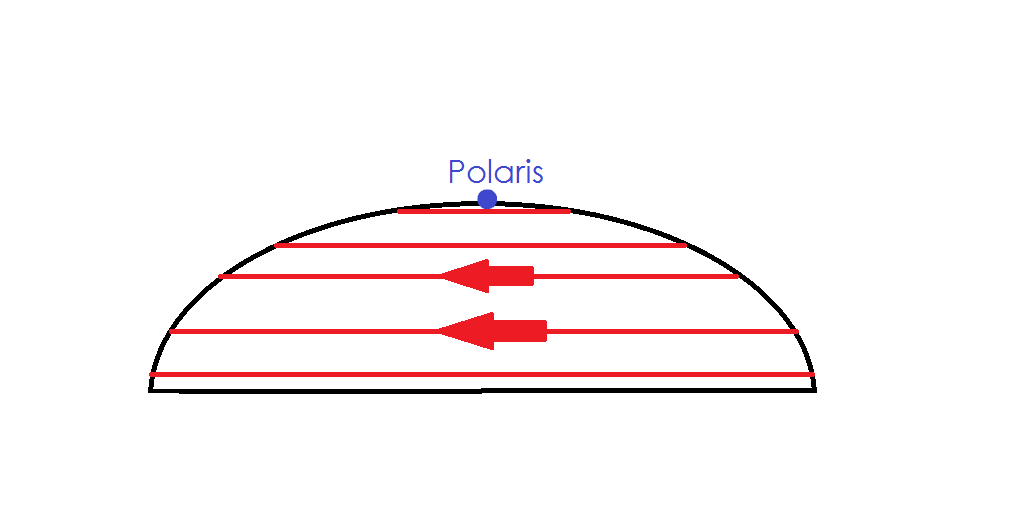
d)Wherever you are in the southern hemisphere, you will see stars rotate anti-clockwise on a central point looking due south. That means for someone on Australia can see the same stars looking due south as someone on South Africa or Argentina when on a flat earth, they are looking at different and even
OPPOSITE directions.
e) The path of the stars on the equator would be an arc in a flat earth when in reality is a straight line as predicted by a sphere.
9)Moon distance. If the moon is 3000 miles or so above the ground in the flat earth, why do ham radios can bounce signals, calculate their return and get roughly 384.000km of distance ?